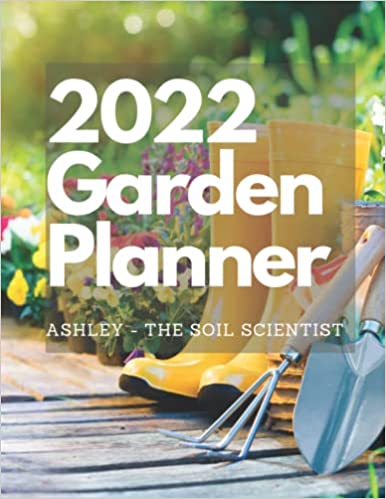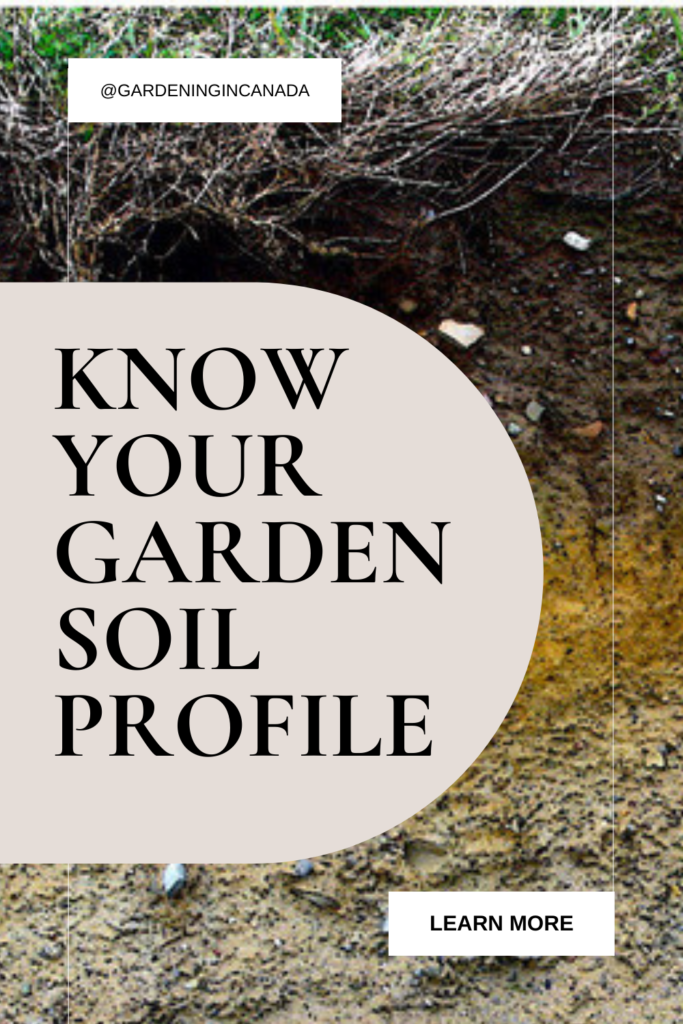- Canada’s Growing Zones Are Changing 2024 - January 12, 2024
- Attracting Wildlife To The Garden - May 16, 2023
- How To Garden Near A Septic Tank - May 9, 2023
Understanding soil profiles for your garden is important because it takes the guessing out of your plan for your soil care. This Gardening In Canada article is going to look at how to understand you are soil profiles and some at-home soil testing you can do.
If you are new to this blog my name is Ashley and I am a soil scientist. I am located in a Canadian Zone 3 and a USDA Zone 4. I write articles, make YouTube videos, Instagram & Facebook posts all designed for Canadians and Cold Climate gardeners using science-based methods. If you are looking for anything specific be sure to let me know in the comments down below.
Why Soil Profiles Matter For Gardeners
Soil profiles are important to a soil scientist. This is similar to a doctor’s ability to read an X-ray. This allows us to see exactly what we are working with. The process of looking at a soil profile is not a yearly event. It’s a simple one-time look at what your landmass looks like. Soil profiles take hundreds of years to be altered in most cases. This is why understanding soil profiles for your garden is a one time investment that can last a lifetime.

If you are looking for a workbook with a number of at-home soil tests checkout my garden planner. There is both a paperback option and a PDF printable.
For a gardener or producer, we are mostly interested in the soil profile that is in contact with the root system. This means two to three feet is in most cases all you need to dig. The profile should look something like the photo below.
Soil Horizons Help WIth Understanding Soil Profiles For Your Garden

O Soil Horizon
The O horizon of your soil profile is an indication of how much carbon content there is. Carbon is important when it comes to encouraging microbe activity and nutrient cycling. Carbon in our soil is also responsible for giving us good soil structure. determining your O-horizon is pretty easy to do. Your O horizon will consist of everything that is loose on top of the soil surface. For those of you that rototill the area you will need to find a patch of land that is untouched.
A Soil Horizon
The a horizon of our soil is the highly sought after topsoil. Topsoil is the area of our soil profile that is active with microbes, contains some carbon content, has high levels of the three macro nutrients and ultimately determines plant success. In the image above some soil scientists may sat that there are two A horizons making up this profile. This is indicated by the slightly later colour in the lower half of the day horizon.
If you are using my soil testing book or following along on YouTube consider grabbing a soil sample from this horizon. This horizon can be tested for things such as soil texture, soil pH, soil calcium carbonate and colour. keep in mind this soil horizon can be rather large. In some cases if the land has been managed well or is under a grassland for extended periods of time the soil A horizon can be as deep as 2 feet.
B Soil Horizon
The B horizon of our soil is considered the sub soil. It often is the soil horizon that captures runoff of nutrients from the a horizon. The big horizon of our soil is generally not very active with microbes. This is because the area is too far from the surface. One thing to note in this horizon may be discoloration. If you’re noticing red streaking for example this is a sign of standing water. This means the soil is receiving too much water, has poor drainage or that it has a high water table.
Keep in mind that the B horizon can be a completely different soil texture when compared to the a horizon. This will often happen in cases where the area was backfilled during construction, or it is located on a floodplain. If you were noticing a change in soil texture from clay to sand or silt to sand this may be an indication of land activity.
C Soil Horizon
You will often hear me speak about the fact that our soils are high in natural levels of calcium and magnesium. This is because I am referring to Horizon C. Horizon C of our soil is bedrock that is beginning to be broken down. This entire horizon is usually devoid of any organic material and will usually contain rock fragments. This is our soil profiles source for micro nutrients.
Our plant roots do not often interact with the C horizon of our soil. But I wanted to include this horizon in our soil profile study to help you understand where are micronutrients comes from. Not all nutrients come from above some do you come from below. All these horizons combined help build the picture for understanding soil profiles for your garden.
What Understanding Soil Profiles For Your Garden Can Help You Determine
Signs Of Poor Soil Drainage
A sign of poor water drainage in soil can show up in any of the soil horizons. If you notice that your soil horizons look washed out, meaning they are lighter in colour with some brown or white streaking. This is a sign that your soil has a low water holding capacity and water is very quickly moving through the profile. This washed out appearance is a great reason to focus on building up carbon content in your soil.
This increase in carbon through compost, manure, other organic Amendments will all help increase the water holding capacity of the soil. This increase in water holding capacity will reduce the continual loss of nutrients. This loss of nutrients and organic material is what is causing the lighter colours and washed out appearance of the soil.
If you’re noticing red streaking or red dots in your soil it can be an indication of water hanging out too long in the soil profile. This hanging out of water can result in anaerobic soil environments which means potential for root rot bacteria to form. Another thing you may notice in your plants if your soil is waterlogged is chlorosis.
This red colouration in the soil is from concentrations of iron. Think of it as a rust caused by long term exposure to high levels of soil moisture. If this is the case you may want to consider working on aggregation and loosening up of the soil. Things such as tillage radishes or gypsum powder will help to reduce this red appearance.
Signs Of Low Soil Carbon Levels
A sign of low carbon level is a lack of dark brown or black soil material. Keep in mind it is normal to only see high carbon content in the Lack of carbon in your O and a horizons of the soil are simply an indication of soil that has not been used or managed properly. To help increase this you can begin top dressing the soil with compost. Having organic carbon in the B or C horizon is simply an added bonus and not the norm.
Lack of carbon in your O and A horizons of the soil are simply an indication of soil that has not been used or managed properly. To help increase this you can begin top dressing the soil with compost.
Signs Of Calcium Presence In Soil
This is a relatively simple test to perform. I will be doing a post on exactly how to do this in the future. However if you were wanting to grab the details now check out my planner which has the entire how to.
Each horizon is where we are going to be collecting samples for our testing. The reason for this is because small changes in pH, moisture retention and nutrients change between horizons. Keep in mind you can have multiple soil horizons within the A horizon. Things such as moisture levels and organic material can result in changes.
Grabbing a sample from each one of these horizons is going to help you get a better idea of your soil. This will allow you to manage your soil with greater accuracy which ultimately can affect your plants yield. Let me know when it comes down below if you’ve ever looked at your soil profile. And as always feel free to send over photos of your soil profile via Instagram or Facebook. An always rememeber understanding soil profiles for your garden will help remove the guess work.

